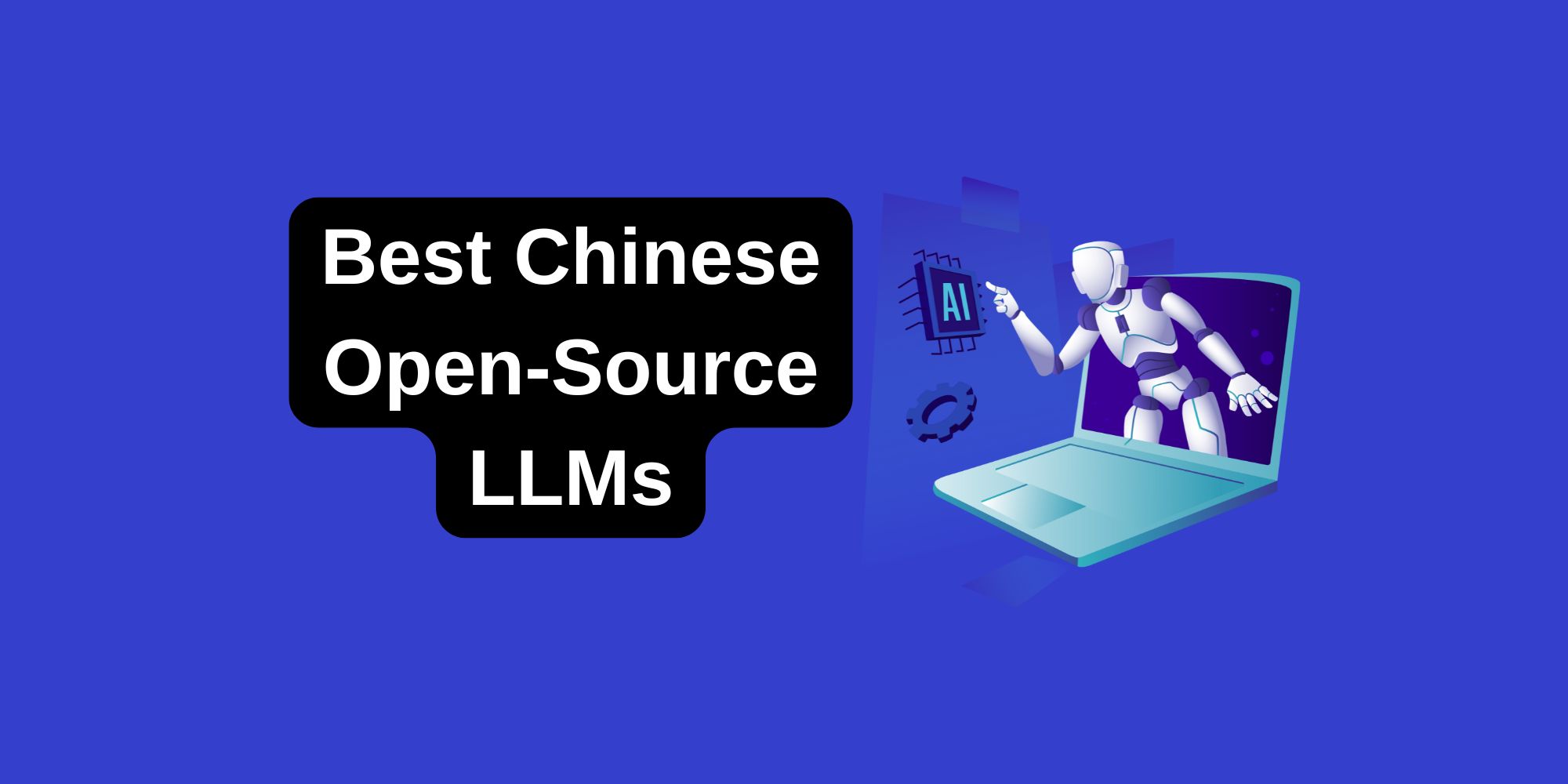7 Best Chinese Open-Source LLMs – Ranked

For years, Silicon Valley wore the crown of open-source AI. Chinese research labs and companies started releasing one heavyweight model after another, moving the center of gravity eastward.
Benchmarks were smashed, Hugging Face trending boards filled up, and suddenly the question wasn’t “are these competitive?” but “which one should we use?”
Of course, not all open-source models are created equal. Some are trillion-parameter giants you’ll never fit on a laptop, while others are sleek specialists tuned for coding or multimodality, let’s count them down:
1. Kimi K2 (Moonshot AI)
Kimi K2 is Moonshot AI’s trillion-parameter flagship. Built on a Mixture-of-Experts architecture, it activates only a fraction of its experts at once, giving it both raw scale and surprising efficiency.
What makes it stand out is its “agentic” design: this can plan multi-step tasks, call tools, and even orchestrate entire workflows like booking trips or generating 3D simulations.
Features
- 1 trillion parameters (32B active per token) with MoE efficiency
- 128k context length for handling huge documents
- Exceptional coding performance (65.8% on SWE-bench Verified)
- High scores on reasoning and creativity benchmarks
- Released under Apache 2.0 license (commercial-friendly)
Best For: Developers who want an agentic model for complex multi-step coding, planning, or tool use.
2. DeepSeek R1
DeepSeek R1 is built around reasoning. Instead of just optimizing for speed or surface-level answers, it uses reinforcement learning to develop chain-of-thought logic, and reflection.
It’s closer to a cognitive engine than a chatbot, setting new records in math and scientific reasoning benchmarks.
Features
- 671B parameters (37B active)
- Trained with reinforcement learning for deep reasoning
- SOTA scores: 79.8% on AIME, 97.3% on MATH-500
- Full family of distilled models available for smaller deployments
- MIT License for maximum flexibility
Best For: Researchers and students needing deep, verifiable reasoning power.
3. Qwen3 Series (Alibaba Cloud)
Qwen3 is Alibaba’s broad, fast-evolving family of open models.
With sizes from under a billion to a 235B MoE flagship, plus specialized versions for coding and multimodality, Qwen is the all-for-one of Chinese open-source AI.
A unique “thinking mode” lets it switch between fast responses and deeper reasoning.
Features
- Wide size range: 0.6B up to 235B parameters
- Hybrid “thinking vs fast” modes
- Qwen3-Coder variant excels in software development
- Vision-language models (Qwen2.5-VL) handle documents, charts, and video
- Apache 2.0 license
Best For: Developers who want flexible, and multimodal open models.
4. GLM-4.5 (Zhipu AI)
GLM-4.5 is designed from the ground up for tool use and agentic workflows. It consistently tops benchmarks for reliable function calling and can even build full-stack applications from a single prompt.
Its vision-language variant (GLM-4.5V) is equally strong, excelling at reasoning over diagrams and GUIs.
Features
- 355B parameters (32B active), with smaller “Air” versions for efficiency
- 128k context window
- Best-in-class tool use benchmarks (90%+ success rate)
- Hybrid reasoning and fast modes
- Apache 2.0 license
Best For: Agent builders who need dependable function-calling and coding support.
5. Baichuan-Omni
Most models can read text, some can see images, a few can parse video. Baichuan-Omni is one of the first open-source LLMs that handles text, images, video, and audio all together.
It’s not the largest model on this list, but its omni-modal design points toward the future of AI interaction.
Features
- Handles four modalities: text, image, video, audio
- Strong performance on Chinese benchmarks (72.2% CMMLU)
- Compact 7B parameter size for efficient deployment
- Open-source license with commercial-use path
Best For: Multimodal applications that need real-time integration of text, image, and audio.
6. Yi Series (01.AI)
Created by Kai-Fu Lee’s 01.AI, the Yi models are bilingual from the ground up, trained from scratch on English and Chinese.
The flagship Yi-1.5-34B model is a favorite for cross-lingual applications.
Features
- Models from 6B to 34B parameters
- Trained on 3.1T bilingual tokens
- Strong performance on Chinese benchmarks (83.1 C-Eval)
- Multimodal Yi-VL variant available
- Apache 2.0 license
Best For: Cross-lingual apps that need balanced English–Chinese performance.
7. DeepSeek Coder V2
If you care about programming above all else, DeepSeek Coder V2 is the clear choice.
Trained on trillions of tokens of code and math, it sets new highs for open-source coding performance, rivaling even GPT-4o in benchmarks.
Features
- 236B parameter MoE model (with a lighter 16B version)
- Trained on 6T tokens of code and math
- 128k context for handling entire repos
- Supports 338 programming languages
- MIT License
Best For: Software engineers who want the most advanced open-source coding partner.
Conclusion
China’s open-source models are shaping the AI frontier. Kimi K2 and GLM-4.5 lead in agentic power, DeepSeek R1 dominates reasoning, Qwen is the all-rounder, Baichuan-Omni pioneers multimodality, Yi nails bilingual efficiency, and DeepSeek Coder V2 stands alone in programming.
Together, they signal a future where state-of-the-art AI is not locked behind paywalls but freely available to anyone with the hardware to use it on MindKeep.


